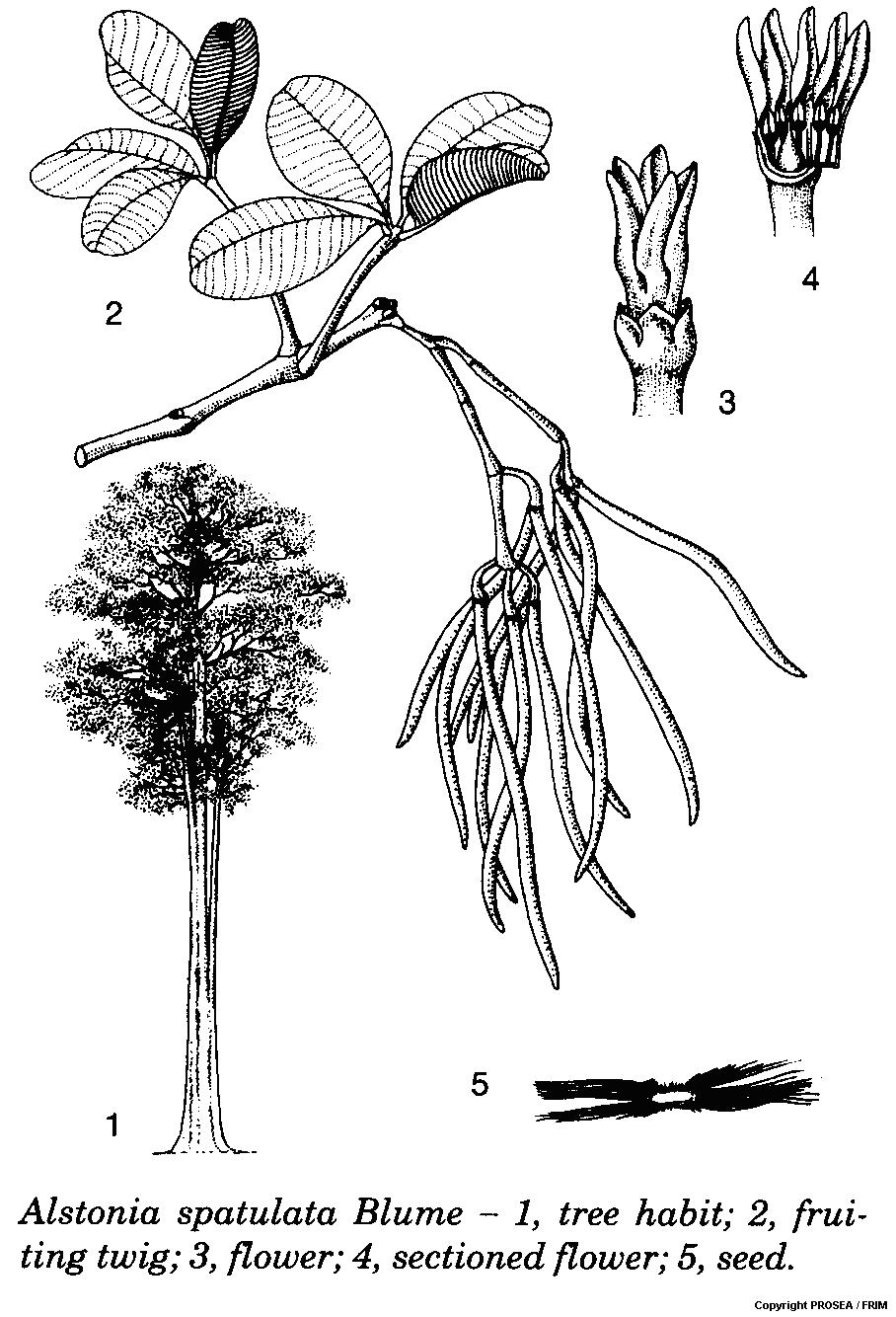Alstonia spatulata Blume
Family
Apocynaceae
Synonyms
Alstonia cuneata Wallich ex G. Don, Alstonia cochinchinensis Pierre ex Pitard.
Vernacular Names
| Malaysia | Pulai paya (General), pulai basong (Peninsular), pulai lilin (Sabah). |
| English | Hard milkwood, siamese balsa. |
| Indonesia |
Lame bodas (General), pulai gabus (Sumatra). |
| Thailand |
Thia, sia, teenpet phru (Peninsular). |
Geographical Distributions
Alstonia spatulata is distributed in Laos, Cambodia, Vietnam, Thailand, Peninsular Malaysia, Sumatra, Bangka Island, West Java, Borneo and New Guinea.
Description
Alstonia spatulata is a small to medium-sized tree which can grow up to 20(-30) m tall. Its cylindrical bole is above a fluted and shortly buttressed base, and measures up to 75 cm in diametre. The outer bark is grey, smooth and with small papery flakes while the inner bark is pale yellow and with copious latex.
The leaves are on a narrowly winged petiole in whorls of 4-6, measuring 7-10 cm long, spoon-shaped, rounded at the top and with numerous secondary veins.
The inflorescence is loose and its flowers are borne on pedicels of 2-10 mm long. The sepal is hairless while the petal is smooth outside. The follicles are hairless.
Ecology / Cultivation
Alstonia spatulata occurs scattered on poorly drained, frequently flooded, clay-rich alluvium and on gley soils on undulating land, particularly near streams, usually below 300 m altitude. It is often abundant in secondary or shrub vegetation.
Line Drawing / Photograph
References
- Plant Resources of South-East Asia No.5(1): Timber trees: Major commercial timbers.



